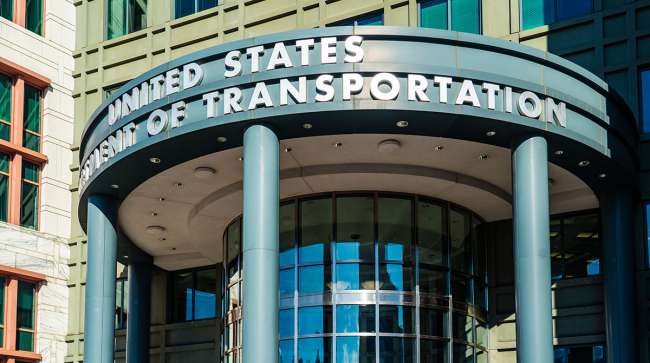Senior Reporter
FMCSA: HOS Violations Rise After Rule Change

[Stay on top of transportation news: Get TTNews in your inbox.]
Amendments to the hours-of-service rule that went into effect in late 2020 may have increased flexibility for truck drivers, but the percentage of HOS violations rose “significantly higher” the first year of the rule’s implementation, according to a new analysis sent to Congress this month.
However, the Federal Motor Carrier Safety Administration analysis did not show an increase in overall crash trends the year after the rule was amended.
The final rule, primarily intended to address flexibility concerns by drivers, went into effect Sept. 29, 2020.
The changes to the final rule included a shorthaul exception, a sleeper berth provision, adding two hours of driving in adverse weather and making the mandatory eight-hour driving break more flexible.
The congressionally mandated report was intended to analyze the “real-world effects” of the new regulation by comparing safety data from two years prior to the adoption of the HOS amendments and data collected the year after the implementation of the regulation tweaks.
Congress requested that FMCSA report the results of the analysis annually in the budget request, brief the House and Senate committees on appropriations upon request and post the analysis on the agency’s website.
The Joint Explanatory Statement also called for FMCSA to conduct the analysis by comparing “safety data, including but not limited to, the number of crashes, crash type, number of fatalities categorized by occupant type, number of serious injuries, the rate of involvement that large trucks have accidents, and the time of day and on what type of roadway the accident occurred.”

Chad Crotty of DDC FPO Solutions discusses how fleets handle outsourced business services. Tune in above or by going to RoadSigns.ttnews.com.
The agency did not offer an explanation for the spike in HOS and HOS out-of-service driver violations, but suggested the COVID-19 pandemic could have influenced the outcome.
“No conclusions can be drawn yet about the observed crash trends,” the agency said.
“The data do not show a significant difference in crash or fatality rates, although it is important to note that initial trends may have been confounded by the COVID-19 pandemic’s effects on industry operations and FMCSA’s emergency declaration that provided HOS regulatory relief for commercial motor vehicle operations providing direct assistance in support of COVID-19 relief efforts,” the analysis said.
Specifically, the analysis compared the following time periods bracketing the change to HOS regulations that became effective on Sept. 29, 2020. They included a pre-rule change period for inspection and crash data of Jan. 1, 2018, to Sept. 30, 2020, and a post-change period for inspection and crash data of Oct. 1, 2020, to Sept. 30, 2021.
The pre-rule-change driver inspections with one or more HOS violations changed from 7.6% to an 8.5% rate for the post-change driver percentage, and were rated as “significant” numbers. By contrast, the driver inspections with one or more out-of-service HOS violation only rose from 2.6% to 3.2%.

Horvath
“I’m reluctant to use COVID-19 as an excuse, but it’s certainly a factor anytime we compare data from 2020 and 2021 to other time periods,” said Dan Horvath, vice president of safety policy for American Trucking Associations. “FMCSA certainly acknowledges that in their analysis.”
But Horvath added there could be a number of reasons why HOS violations increased, and several could be a direct result of influences related to COVID-19.
“For instance, I’m aware of situations where drivers claimed use of the COVID-19 HOS exemption, but roadside enforcement determined they did not qualify. This would lead to an HOS violation that would otherwise not have occurred.”

Taylor
“It must be noted that the COVID-19 pandemic may have had a confounding effect on the observed trends by disrupting industry operations,” the FMCSA analysis said. “FMCSA also put in place an emergency declaration that provided HOS regulatory relief for commercial motor vehicle operations providing direct assistance in support of COVID-19 relief efforts.”
Norita Taylor, a spokeswoman for the Owner- Operator Independent Drivers Association, said, “All the study shows is that hours of service are often misunderstood by drivers who receive little training beyond some regulation passed.”
Said Jeremy Disbrow, a roadside inspection specialist with the Commercial Vehicle Safety Alliance: “I’m cautious to draw conclusions because it’s one of those things where there was too much going on at the same time to make a determination on what impacted what. Did the violations increase? Absolutely, they did. But is it because of the new hours-of-service requirements? I don’t know that that’s it.
CVSA joined other Our Roads Our Safety partners at @FMCSA's #OurRoadsOurSafetyWeek event today at USDOT headquarters. Whether you drive, walk, roll or ride, everyone plays a role in creating a safer road system. pic.twitter.com/ajkNXGp1Sm — CVSA (@CVSA) May 11, 2023
“I think we were seeing a lot more violations, coincidentally at the same time when the hours of service was changed because inspectors are better trained now and understand how to read ELDs much better.”
Want more news? Listen to today's daily briefing below or go here for more info:




